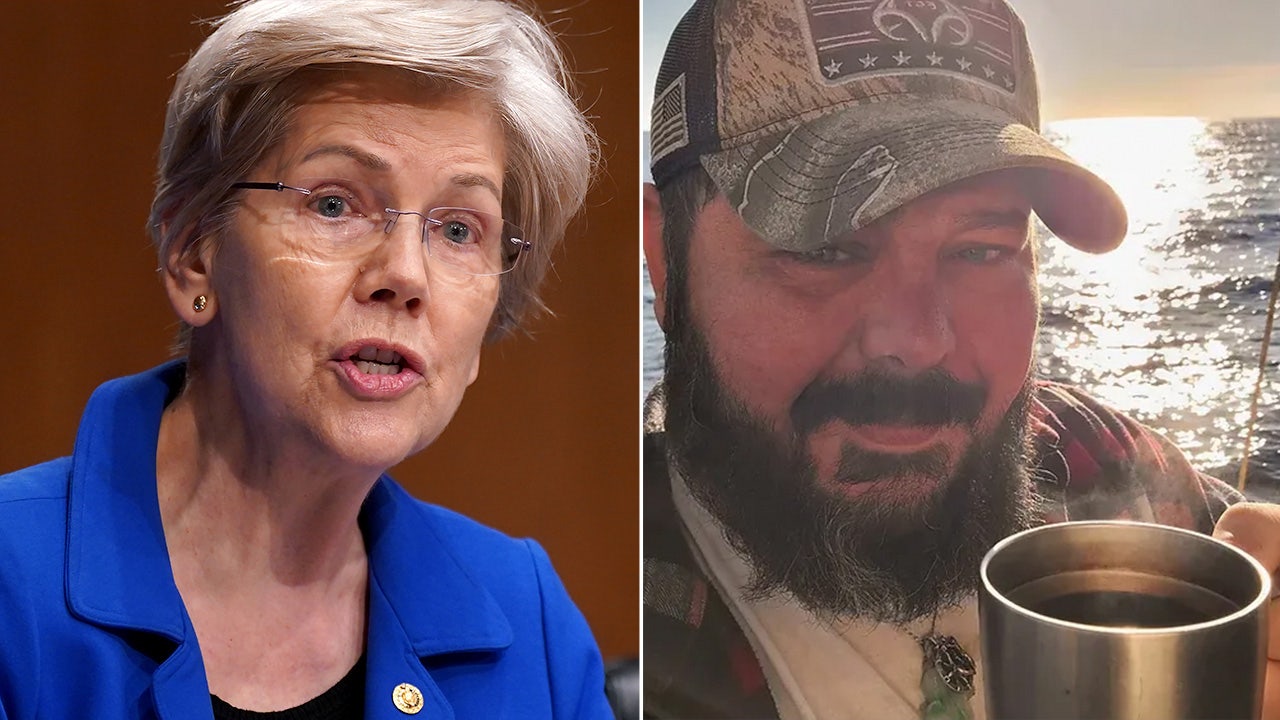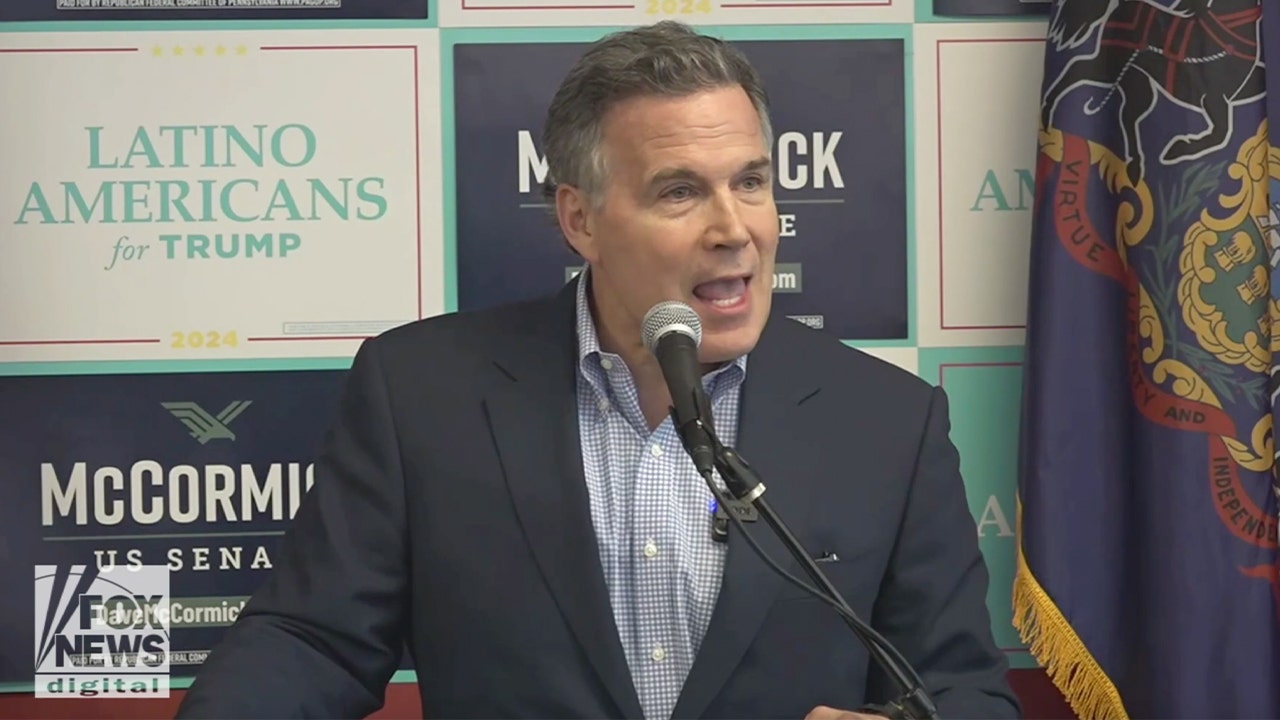Business
End of an era: Southwest Airlines will end open seating, introduce red-eye flights

For the first time since it was founded more than half a century ago, Southwest Airlines will assign seats — a shift that will allow the low-fare, no-frills company to meet evolving customer preferences and charge more money for premium seats.
The Dallas-based airline also will start to offer overnight, red-eye flights, starting on Valentine’s Day 2025, in five markets, including Los Angeles, Baltimore and Nashville.
Southwest had for years touted its model of open seating as the “ultimate expression of its founding ethos: to make air travel affordable and accessible for everyone.”
“You can sit anywhere you want — just like at church,” flight attendants told passengers.
But Southwest said it had listened to customers who sought more options, often desiring more comfortable, premium seats when they took longer flights. When customers decided to switch to a competitor from Southwest, the airline said, their No. 1 complaint was dissatisfaction with open seating.
“The research is clear and indicates that 80% of Southwest customers, and 86% of potential customers, prefer an assigned seat,” the airline said in a statement. “By moving to an assigned seating model, Southwest expects to broaden its appeal and attract more flying from its current and future customers.”
Currently, Southwest passengers are grouped into boarding positions based on the order of check-in, with some exceptions. This means those who check in for their flight early are rewarded by being able to get on the plane — and snag a preferred seat — before other passengers.
It’s a practice that many budget-conscious, but still comfort-inclined Southwest fliers appreciated.
In 2006, the airline abandoned a plan to assign seats after a trial run and customer surveys revealed that travelers preferred open seating. Keeping open seating was also more efficient. Assigned seating increased boarding time by one to four minutes, the airline said at the time.
The change will enable the company to make more for premium seats. Southwest said it was working on an updated cabin design, with roughly one-third of seats offering extended legroom.
“Although our unique open seating model has been a part of Southwest Airlines since our inception, our thoughtful and extensive research makes it clear this is the right choice — at the right time — for our Customers, our People, and our Shareholders,” Bob Jordan, Southwest’s president, chief executive and vice chairman of the board, said in a statement.
Southwest did not specify when the seat changes will go into effect. Some Southwest fans took to social media to decry the move to assigned seats, saying that it was enough to make them abandon the budget-friendly brand. Others said they always hated having to hunt for an open seat.
But at Los Angeles International Airport on Thursday, many passengers seemed unfazed by the policy change.
Jim Kingsley navigated a luggage cart stacked high with bags for him and his family, having just arrived in Los Angeles after a long flight from Minneapolis.
It’s Southwest’s inexpensive checked bag policy, not seating, that has earned his business. “Otherwise we’d be carrying all these,” he joked.
Southwest, he said, seems safer and friendlier than other airlines. It doesn’t surprise customers with unexpected fees and offers flights at what Kingsley said is a good value for his family.
“As far as airlines go, Southwest has got it going on,” he said.
The company, long one of the nation’s most profitable airlines, has struggled financially in recent years. Costs — including wages, goods and maintenance — have risen across the airline industry in the years since the COVID-19 pandemic began. The problem for Southwest is that its revenue has been much slower to rise than for its competitors, said Edward Russell, a freelance transport and aviation writer.
“Airlines that offer premium products and large loyalty programs including American, United and Delta have done much better,” he said. “The changes we’re seeing from Southwest are basically an attempt to boost revenue to keep up with the rise in costs.”
Estimates from Wall Street analysts indicate that assigned seating could result in as much as $2 billion per year in additional revenue for the airline. This comes at a time when Southwest has been grappling with pressure from investors to boost revenue, Russell said.
On Thursday, Southwest reported that its profit in the second quarter of 2024 dropped more than 46% from a year earlier to $367 million.
“Our second-quarter performance was impacted by both external and internal factors and fell short of what we believe we are capable of delivering,” Jordan said.
“We are taking urgent and deliberate steps to mitigate near-term revenue challenges and implement longer-term transformational initiatives that are designed to drive meaningful top and bottom-line growth.”
It’s unlikely that the seating switch-up will dramatically raise prices for travelers, but those who want to sit at the front of the plane or enjoy the view at a window seat should expect to pay more as they do on other airlines, Russell said.
Tomi Muñoz and Steven Romero, who flew Southwest from Denver to Los Angeles for a vacation Thursday morning, said they’d like to see the airline maintain low ticket prices. The frequent travelers said they’ve never had an issue with the open seating policy.
“It depends on who you are as a traveler,” said Muñoz, 22, adding that anxious fliers might get some relief by knowing exactly where they’re going to be sitting on the plane.
But Muñoz and Romero don’t worry about that.
“We end up sitting with each other anyway,” Romero, 23, said.
Destinee Gary, 25, said Southwest’s current seating arrangement enables her to avoid loud groups or potentially disruptive children during the flight. Gary, who has flown only once before, prefers to scope out the situation on a plane before committing to a spot.
But she said an increase in ticket prices would be the real deal-breaker.
“If it costs more,” she asked, “then why not fly American?”

Business
New owners on Rodeo Drive betting big on luxury retailers

Wilshire Rodeo Plaza sits at one end of Rodeo Drive and its new owners are betting big the address on Beverly Hills’ iconic street will lure luxury retailers.
Justin and Tyler Mateen, along with their brother-in-law Pouya Abdi, paid more than $208 million for the property in a deal that closed earlier this week. They bought from investment firm Nuveen, which had owned it since 2006.
The property, which spans the 100 block of Rodeo Drive, includes an underground parking garage and four buildings with ground-floor retail space and office space on the upper floor. Although most of the office space is occupied by tenants that include Merrill Lynch and Bank of America, the brothers said in a joint interview Wednesday the purchase was driven by a plan to fill more of the space with high-end retail tenants.
“Most of the value in this property and the reason that we’re buying it is in that high-end retail,” Justin Mateen said. “There’s untapped potential in the building, and at the same time, there’s a tremendous amount of need from these luxury tenants.”
Their strategy underscores the strength of the retail real estate market in the greater Los Angeles area that boasts a roughly 94% occupancy rate, according to real estate firm Colliers. By comparison, office space, which has struggled to regain its footing following the devastating impact of the COVID-19 pandemic, is just 76% occupied.
In Beverly Hills, the vacancy rate for office space climbed from 20.6% in the first quarter of the year to 23.8% in the second quarter, according to Colliers.
Justin Mateen, who co-founded the dating app Tinder in 2012, said he and his brothers plan to nearly double the retail footprint of the complex by converting office space on the second story.
Conversations with potential tenants interested in moving to Wilshire Rodeo Plaza from spaces they currently occupy elsewhere on Rodeo Drive are ongoing, Tyler Mateen said. He said he believes the property is appealing because of its parking garage and the relative privacy it offers from gawking tourists, he said.
“What we’re seeing is luxury tenants are moving,” Justin said. “They want a larger footprint, so that’s our focus.”
The complex currently houses only one retailer, designer brand Vera Wang.
The brothers said they plan to rebrand the property as “One Rodeo” and to give it a facelift, focusing on the buildings along Wilshire Boulevard and Rodeo Drive.
“It’s a little out of date,” Abdi said. “We do plan on upgrading the facades of the buildings to really continue the look and feel of Rodeo Drive.”
Famous for its uninterrupted string of luxury stores like Chanel and Balenciaga that draw wealthy shoppers, tourists and paparazzi-hunting celebrities, Rodeo Drive is Beverly Hills’ defining attraction.
The sale of the property was first reported by the Wall Street Journal.
The new owners said they’re also looking into ways to use the property’s rooftop space, which is currently undeveloped.
People have pitched them on restaurants and members-only social clubs, Tyler said. And they toyed with the idea of a hotel on part of the upper floor, but dismissed it, Abdi said.
“It’s a family project,” Justin said. “We plan to keep it forever, so we’re spending money to really take it to its full potential.”
Business
Hollywood Teamsters and other crew unions reach tentative deals with studios

A coalition of unions representing drivers, mechanics, location managers, electricians and other Hollywood crew members has struck tentative contract deals with the major studios — closing out a long, turbulent chapter of labor activity in the film and TV industry.
As of late Saturday night, the Hollywood Basic Crafts and the Alliance of Motion Picture and Television Producers have reached agreements on six different contracts. The settlements concluded several weeks of negotiations that became notably tense following a less contentious contract campaign led by fellow crew members union IATSE.
“After a long last 48 hours, we are proud to report that ALL Hollywood Basic Crafts Locals have reached a tentative agreement with the AMPTP late this evening,” Hollywood Basic Crafts spokesperson Amy Gorton said in a statement.
“The basic crafts spent today working closely with our member-led negotiating committees to finalize a deal with the AMPTP that we can now say is being unanimously recommended by our member-led bargaining committees.”
The six new contracts bargained by the Hollywood Basic Crafts include the Teamsters Local 399 Black Book Agreement covering drivers, dispatchers, transportation administrators, animal trainers, wranglers and mechanics; the Teamsters Local 399 Location Manager Agreement covering location managers, assistant location managers and key assistant location managers; the LiUNA! Local 724 Basic Agreement covering laborers; IBEW Local 40 Basic Agreement covering electricians; the OPCMIA Local 755 Basic Agreement covering plasterers; and the UA Local 78 Basic Agreement covering plumbers.
They include terms related to pay, pension and health benefits, streaming residuals, artificial intelligence and autonomous vehicles.
The old agreements — covering a total of roughly 7,600 below-the-line workers — were set to expire July 31.
While bargaining with the AMPTP over the past several weeks, Hollywood Basic Crafts leaders repeatedly called out the entertainment companies for allegedly dragging their feet at the bargaining table and failing to adequately address key issues affecting crew members.
The heated tone of the negotiations was a marked shift from IATSE’s contract campaign, which transpired largely without incident and culminated in a deal covering some 50,000 craftspeople primarily based in Los Angeles. IATSE members ratified the new Hollywood Basic Agreement earlier this month.
The final week of the Hollywood Basic Crafts campaign saw several other entertainment unions — including IATSE, the American Federation of Musicians, the Writers Guild of America, the Directors Guild of America and the Screen Actors Guild — issue a joint statement pressuring the AMPTP “to respect their workforce and make meaningful moves at the negotiating table.”
“As their contract deadline of July 31st quickly approaches, the clock is ticking on the AMPTP to address the unique needs of the various classifications within these unions,” the statement read.
“Our guilds and unions stand strongly united behind the Teamsters and Hollywood Basic Crafts until they gain the compensation and working conditions they deserve.”
On Friday, the AMPTP came to the bargaining table with what it deemed its “last, best and final” offer, the union said. The Hollywood Basic Crafts said it rejected that proposal and presented the studios with a counteroffer it felt strongly about.
“These aren’t just proposals on a piece of paper to our members. These are meaningful terms and conditions that impact their livelihoods,” Lindsay Dougherty, principal officer of Teamsters Local 399 and chairperson of the Hollywood Basic Crafts, said Saturday in a statement.
“We think our response to the producer’s package is reasonable and would be a deal that gets this over the finish line.”
Throughout negotiations, Hollywood Basic Crafts leaders maintained that they were not looking to call a strike but cautioned that they were not interested in extending talks past the contracts’ expiration date.
Fears of a potential crew member walkout peaked in the immediate aftermath of the writers’ and actors’ strikes, which rendered thousands of entertainment workers jobless for about six months. Even since the work stoppages lifted, many remain unemployed due to an ongoing industry contraction that predates the labor disputes.
Concerns of a third strike began to dissipate, though, once the IATSE contracts started falling into place.
Business
Is this the solution to California's soaring insurance prices due to wildfire risk?

In the past several years, homeowners across the state have been either burdened with extremely high insurance premiums or have struggled to find coverage at all. Wildfires have sent California’s homeowners insurance market into crisis and the situation is only getting worse. So far, 2024 has seen 219,247 acres burned, more than 20 times the amount this time last year. As wildfires become more frequent and destructive, insurers have worked to lower their risk exposure through rate hikes, nonrenewals, and even halting new policies in the state entirely.
New buyers and those whose policies have not been renewed have limited options since the biggest companies, State Farm, Farmers, Allstate, USAA, Travelers, Nationwide and Chubb, have limited or paused new policies in the last few years. Earlier this month State Farm’s cancellations of 30,000 homeowner policies mostly in high wildfire risk areas, took effect. In late June, State Farm requested a 31% rate increase, its largest increase in recent history, on the heels of a 22% increase earlier this year. Allstate also recently filed a request for a significant 34% rate increase.
Homeowners are finding the expense and lack of options unsustainable. Sharon Goldman, longtime resident of the Pacific Palisades, has not had her policy canceled yet, but she has seen increases to her premium and worries she could be next. In her ZIP Code the wildfire risk is high, and State Farm decided to not renew 70% of their policies. Starting in 2019, rates of nonrenewals in high- and very high-risk areas grew to 14% compared with 3% and 2% for moderate- and low-risk areas.
Goldman, using her maiden name out of concern for retribution from State Farm, has paid her premiums each year since she bought her home 50 years ago. She has never filed a claim. But she has seen her rate increase 78% in the past two years. Her agent has told her that her fire coverage will be replaced with the state-run FAIR plan in 2025, an increasingly common insurer strategy that leaves homeowners paying more for less coverage.
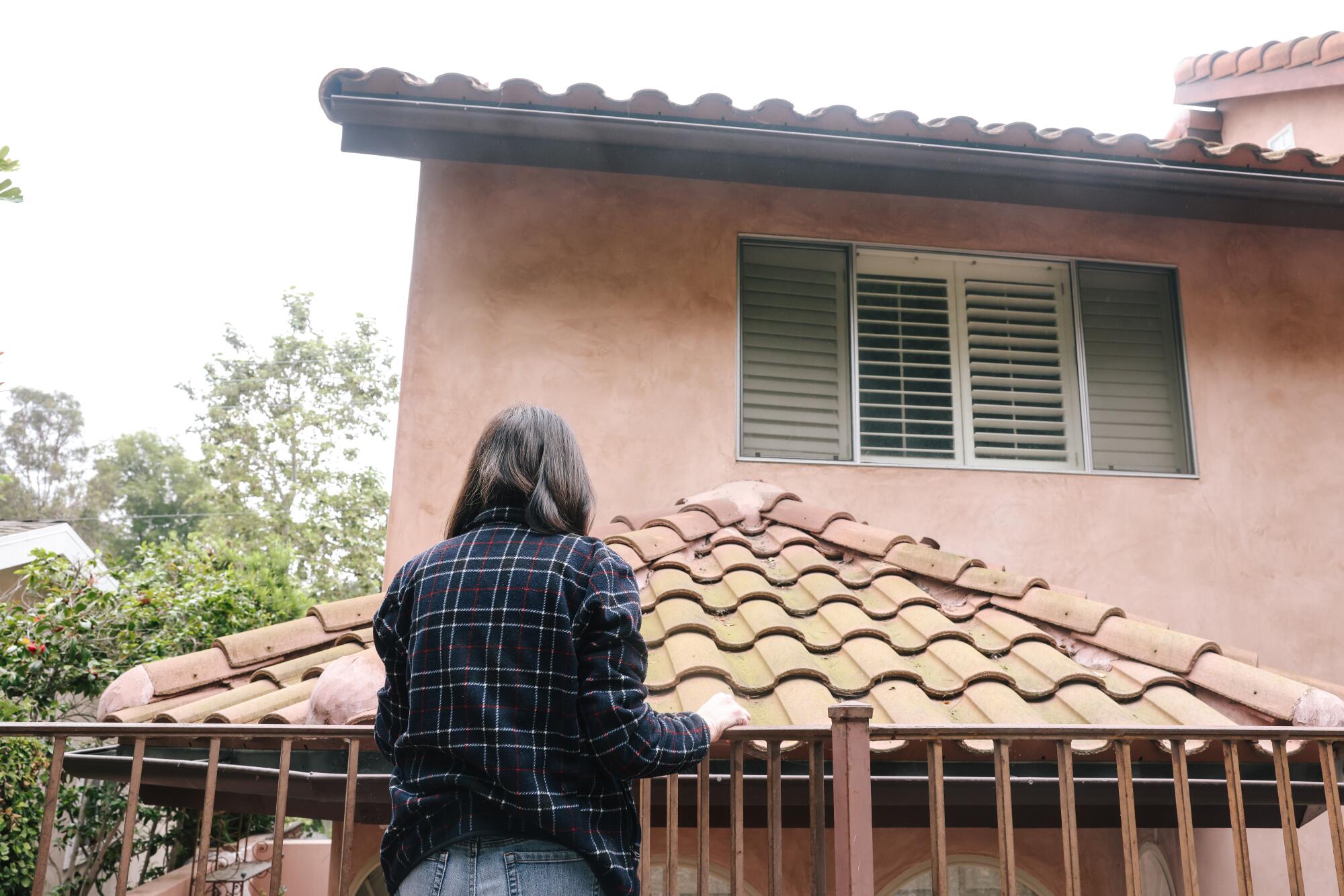
Sharon Goldman poses for a portrait in Pacific Palisades in June. She is one of the many California homeowners struggling to maintain home insurance as costs increase and policies are dropped due to wildfire risk.
(Dania Maxwell/Los Angeles Times)
Goldman and her neighbors are left wondering what options they have left. She hears stories of people paying tens of thousands a year, an impossible amount for her to cover on her retirement budget. She has started looking into moving out of state and out of the home where she raised her children.
While the state does not require insurance, mortgage lenders do. So, going without is not an option for many. Those whose mortgage is paid off, like Goldman, may not be comfortable leaving their home, typically their most expensive asset, uninsured. High rates and loss of fire coverage have pushed desperate homeowners to riskier nonadmitted carriers or to the state-run FAIR plan, meant to be the plan of last resort. But the California Department of Insurance worries that it is quickly becoming overburdened.
Over the past year, Insurance Commissioner Ricardo Lara has been rolling out his plan to increase policy writing in vulnerable areas and get people off of the FAIR plan. One big component of his strategy is allowing insurers to use wildfire catastrophe models to set overall rates. Insurers say the tool would help them more accurately predict the correct rate for the amount of risk.
As a trade-off, Lara says companies that use these models will be required to increase service in distressed areas with a high wildfire risk and a high concentration of FAIR plan policies.
In public workshops held by the Department of Insurance, consumer advocates raised concerns about a lack of transparency with “black box” models that may be used to justify unnecessary rate hikes. Industry advocates are concerned the plan will take too long to implement when they desperately need changes now.
How likely is it a house will be damaged in a wildfire?
There are many versions of catastrophe models. Each modeling company has their own proprietary analysis but they all generally use the same data inputs to answer the same question.

The Harwarden fire burned over 500 acres, destroying three large homes and damaging seven others.
(Jen Osborne / For the Times)
Each modeled event starts with an ignition, the probability that a fire will start at that location, spread, the probability that the fire will travel based on the land cover in the area, and property characteristics. Using those data, the model simulates a large number of possible outcomes for a given location, estimates the likelihood that a structure will burn from wildfire, and calculates the loss for any buildings there.
The USDA Forest Service developed a national analysis of wildfire risk that is similar to what models created for insurance companies would look like. Based on vegetation and fire-behavior fuel models, topographic data, historical weather patterns and long-term simulations of large wildfire behavior, their wildfire likelihood map shows the probability of a fire in any given year.
A critical part of predicting the potential spread of the fire is the available fuel. The Forest Service’s land cover classifications are used in many wildfire models. They specify 40 different fuel types such as grass, shrub, timber, and nonburnable types. Each category is further subdivided based on depth of the cover and humidity or aridity of the climate.
For example, in an arid climate, coarse continuous grass at a depth of 3 feet would have a very high spread rate. A combination of low grass or shrubs and dead leaves or needles in the forest would have a low spread rate.
Property characteristics such as the type of roof or whether the siding is fire-resistive make a significant difference in whether a structure will ignite from wildfire embers. The Center for Insurance Policy and Research found that structural modifications can reduce wildfire risk up to 40%, and structural and vegetation modifications combined can reduce wildfire risk up to 75%.
All of these factors are combined in the model with information about the rebuilding cost and level of coverage to generate an amount of risk unique to the individual property.
Could these models turn the industry around?
Currently, companies are required to calculate their projected losses, on which their overall rates are based, using a historical view of wildfire loss over the previous 20 years. As wildfires increase, however, this means that the average loss trails behind the current state of wildfire risk.
Nancy Watkins, an actuary and principal at the insurance consulting firm Milliman, said that she believes the inclusion of catastrophe models could save the industry. She analyzed the effect of a model on rates compared with using just historical experience. While the rates would generally be higher, the increases would be more even.
In April during a public meeting, Allstate said that if wildfire catastrophe models were allowed, they would once again start writing new policies in the state.
But wildfire catastrophe models are already used by insurance companies in California for some business decisions and have been for some time. They use models to determine where to write or renew policies, which is one of the reasons nonrenewals have disproportionately happened in high-risk areas.
In recent rate filings, Allstate, Farmers and State Farm cited a modeled wildfire risk score as the basis for not renewing policies. Allstate used CoreLogic’s Risk Meter score in 2019 to classify all policies that fell above certain risk thresholds as ineligible for renewal. A 2023 filing from Farmers documents eligibility guidelines for new and renewing policies that sets a risk level using Verisk’s FireLine and Zesty.ai’s Z-FIRE scores. State Farm’s recent 30,000 nonrenewals are based on CoreLogic’s Brushfire Risk Layer.
Amy Bach, executive director of United Policyholders, says that wildfire models worked their way into rates without enough state oversight. “We didn’t regulate the use of risk scores and now [they] are having a dramatic impact on the market and the genie is out of the bottle.”
Some companies use models to assess relative risk between properties and adjust individual rates accordingly. State Farm multiplies its base rate by a location rating factor, calculated using catastrophe models produced by CoreLogic and Verisk. Areas with high wildfire risk have seen dramatic increases in the location rating factor in the past few years.
This process is called segmentation and the Department of Insurance is aware that it is opaque. Department spokesperson Michael Soller says, “People do not know what their risk score is. They don’t know what goes into the risk score. It’s a black box. Yet, the risk score can be used to [charge you] double what somebody else pays.”
While these situations are significant for some, they generally only apply to select high-risk properties. The median effect of the location rating factor has remained fairly stable.
But under the commissioner’s new policy, model results could also be incorporated directly into the overall rate. Soller says that one important difference in this new regulation is that for a model to be valid, it will need to incorporate property and community level risk mitigation into rates, including state agency forest thinning and utility company efforts. As more investment goes into making communities safer, in theory the rates should decrease.
Only you can prevent forest fires?
Wildfire mitigation happens at the state and local level. Since 2020, in addition to baseline spending, California has allocated more than $2.6 billion towards its wildfire and forest resilience package. 872 communities in the state are registered participants in Firewise USA, a program administered by the National Fire Protection Association that sets standards for fire safety.
For an individual, retrofitting one’s home for wildfire resistance is not cheap. On average, homeowners spend $15,000 on a new roof.
As of October 2022, companies such as State Farm that use wildfire models in segmentation are already supposed to give mitigation discounts. A February filing from State Farm breaks down how their discounts would work in a low-, medium- and high-risk area.
For the low-risk group, the dollar amount saved may not be worth the investment in mitigation. For the high-risk group, the slightly lower percentage reductions would still result in more substantial dollar amounts saved.
According to the State Farm documents, these discounts are given at a set rate for all properties across the state. Granular catastrophe models take into account the impact of mitigation on the property level, nearby community mitigation and any recent wildfire history that might indicate a temporarily reduced risk.
However, a complaint raised several times during the regulation workshops was that when homeowners do spend money, often thousands, on lowering risk, they do not see any changes in their insurance premiums. Some say their policies were still dropped.
Goldman has already completed the property-level mitigation work. She has a class A Spanish tile roof. She does the brush clearance every year. This past year it cost about $1,200. She even has an outdoor sprinkler system. But she did not learn about mitigation from her insurance company. Instead, it was on one of Bach’s monthly educational community calls where she got the idea to install fire-resistant vents.
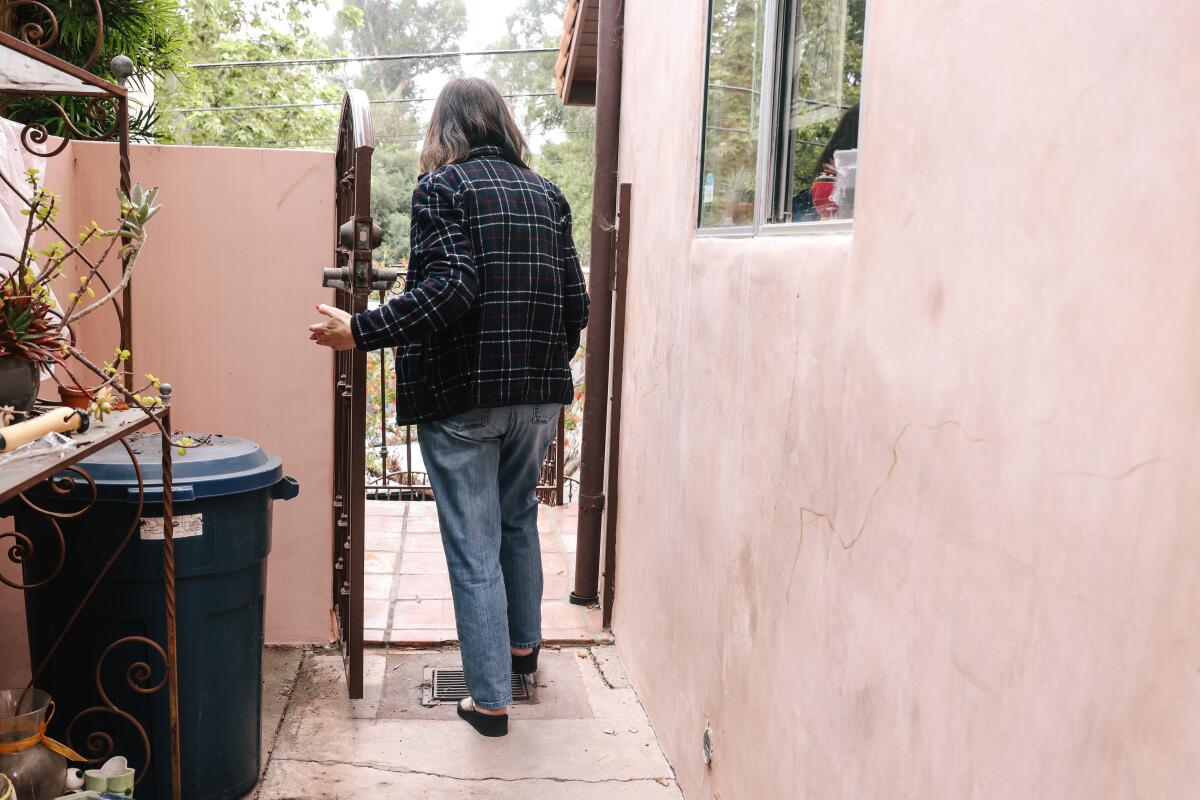
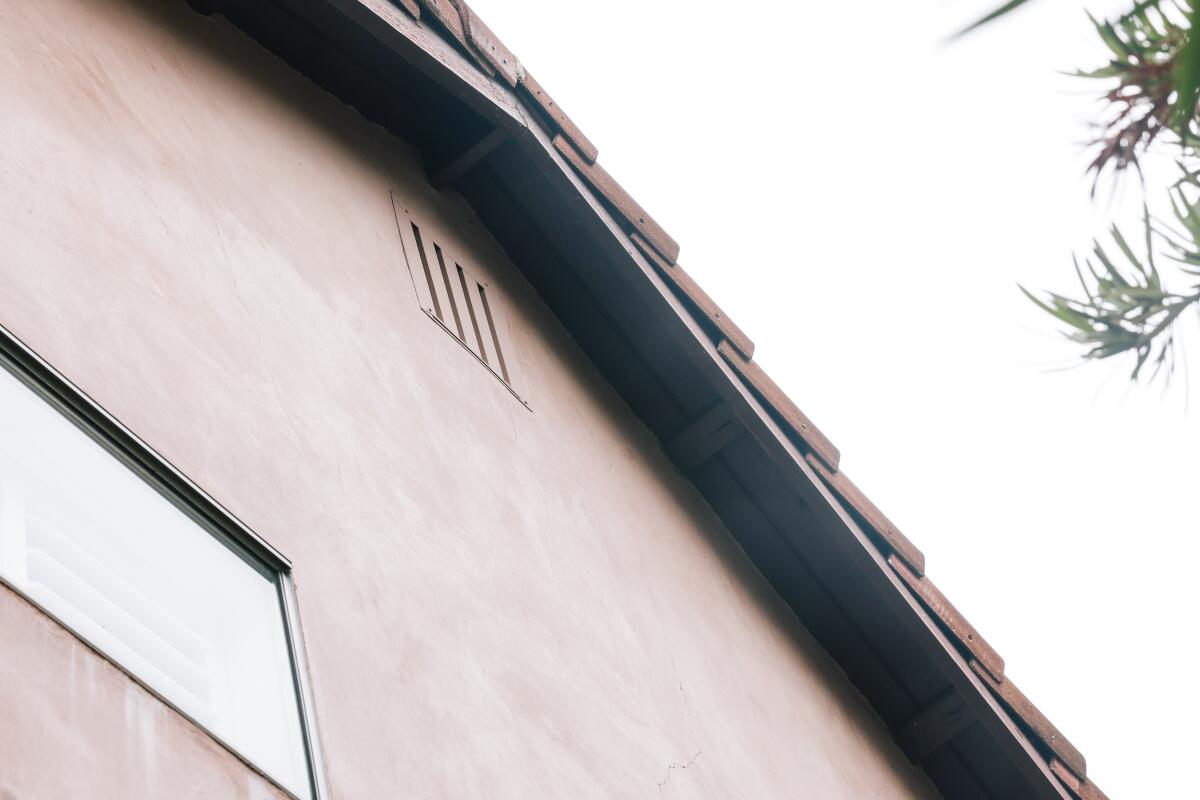
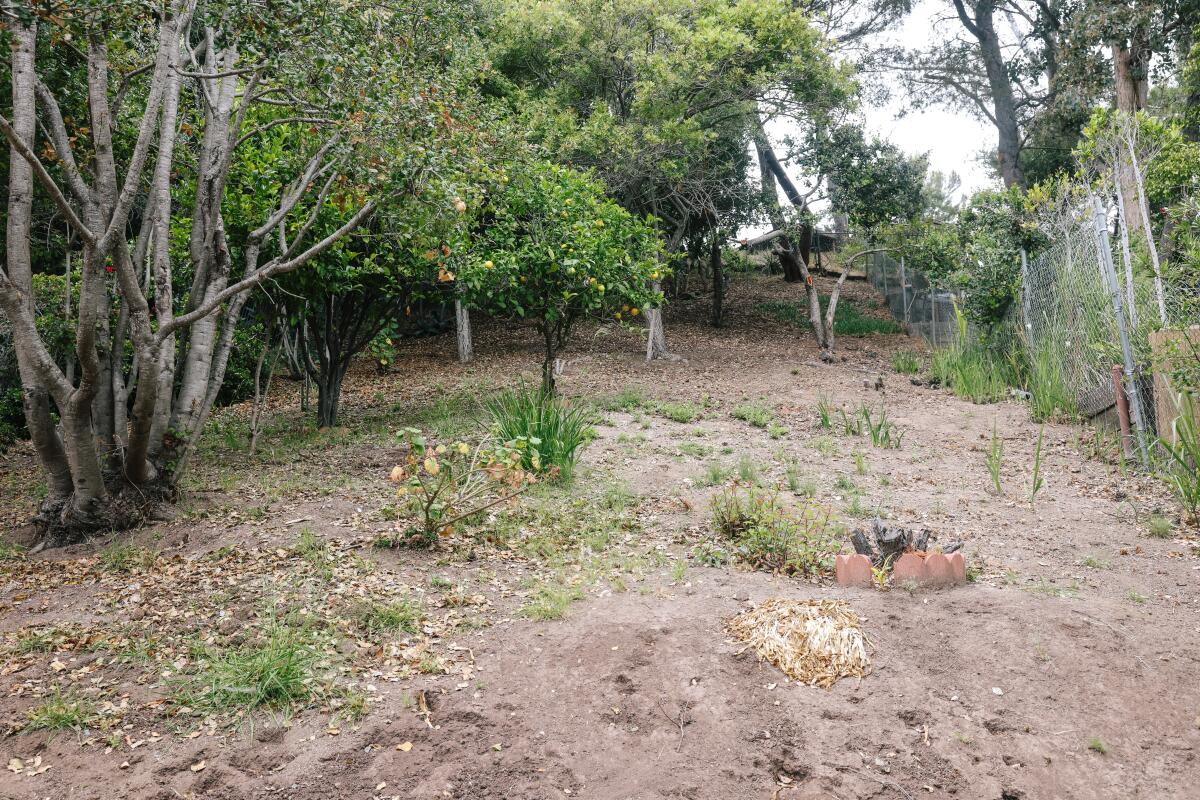
Sharon Goldman walks through the exterior of her home where she has lived for about 50 years and raised four kids in Pacific Palisades. (Dania Maxwell/Los Angeles Times)
And yet, she has not received a mitigation credit from State Farm and has not received any information about how to receive one. When she asked her agent whether the work she had done on her home qualified for a discount he said no. The Department of Insurance says that they review consumer complaints for rate accuracy and conduct regular examinations of insurance companies. They noted that concerned consumers should contact them to review their specific situation.
Making models a reality
The catastrophe modeling regulation requires insurers to submit their modeling information to the Department of Insurance for review by an internal model advisor and any necessary consultants. Some proprietary information is allowed to remain confidential but proponents of the plan say that the regulators will have all the information they need to assess the models even if the general public does not.

Firefighters work to douse a home on fire in Harwarden Hills, a high-end living community in Riverside.
(Jen Osborne / For The Times)
The department says it is still considering public input from the most recent workshop and has no further plans for additional workshops. Once the regulation is finalized there will be a public hearing. Commissioner Lara plans to have this regulation and the rest of the Sustainable Insurance Plan in place by the end of the year.
In addition to forward-looking catastrophe models, Lara’s plan will introduce the ability for insurance companies to include reinsurance costs in rates and to increase coverage in the FAIR plan. Details for both of those changes are expected to be released this month.
-

 World1 week ago
World1 week agoFreshers' week in Strasbourg for new EU lawmakers
-

 News6 days ago
News6 days agoHow the Trump Rally Gunman Had an Edge Over the Countersnipers
-

 Politics1 week ago
Politics1 week agoBalance of Power: Trump singles out Nevada at RNC as he looks to flip state he lost twice
-

 Politics1 week ago
Politics1 week agoReporter's Notebook: 'Do not stop filming'
-
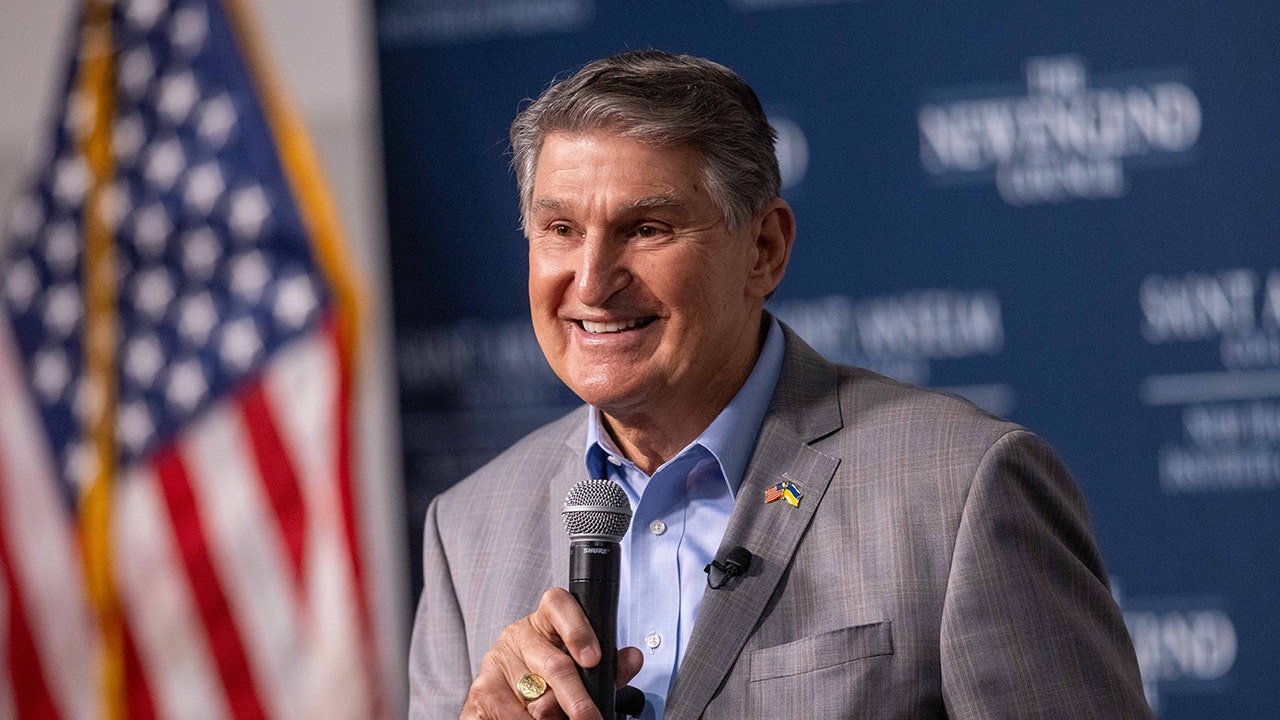
 Politics1 week ago
Politics1 week agoManchin considers re-registering as Democrat to run for president
-

 World1 week ago
World1 week ago‘Torn up bodies’: Israel intensifies bombing campaign in Gaza
-
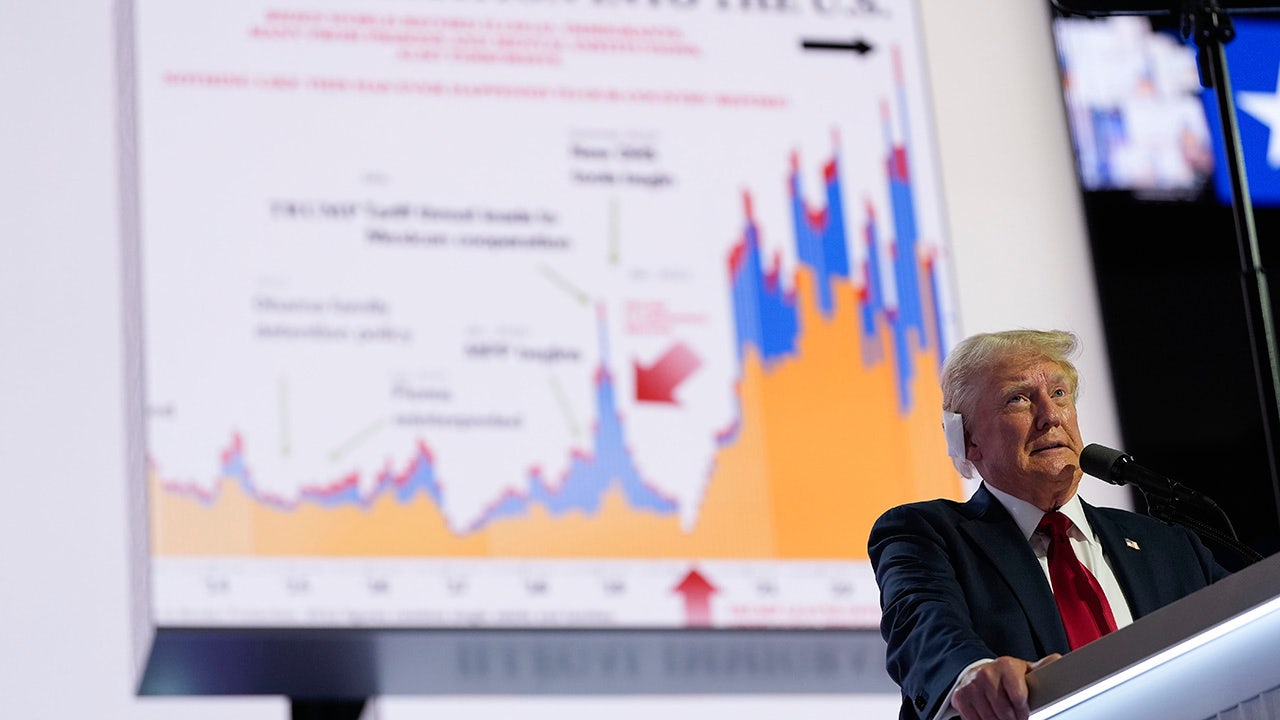
 Politics1 week ago
Politics1 week agoTrump breaks out immigration chart shown right before assassination attempt: ‘Saved my life’
-
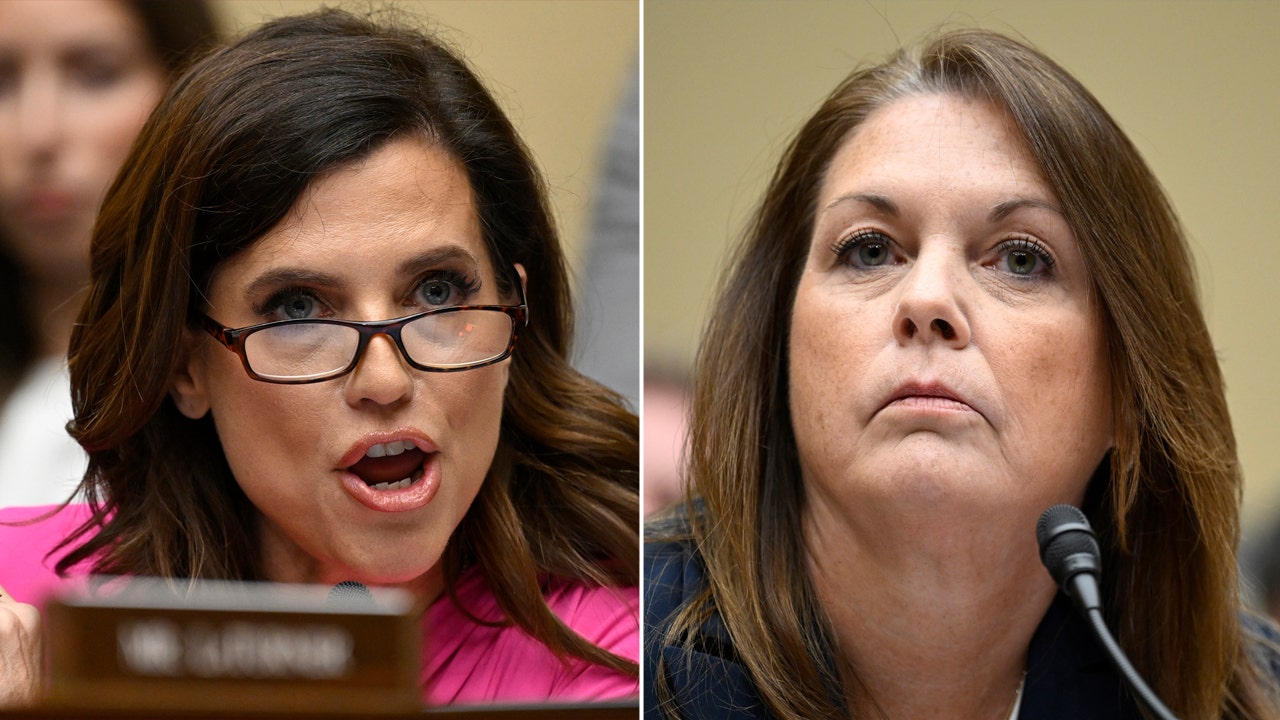
 Politics6 days ago
Politics6 days agoTop five moments from Secret Service director's hours-long grilling after Trump assassination attempt











